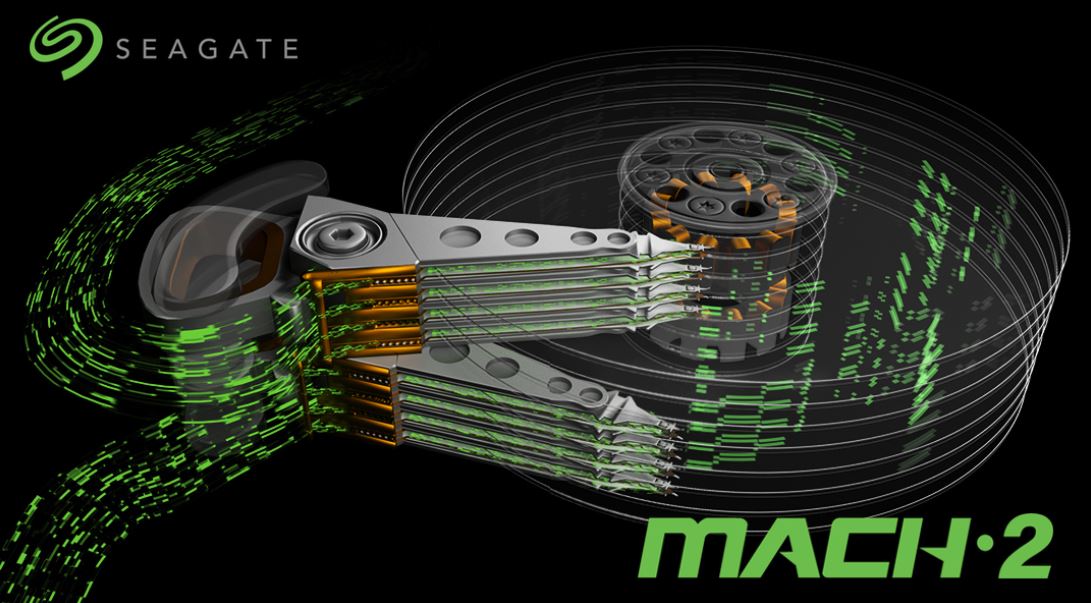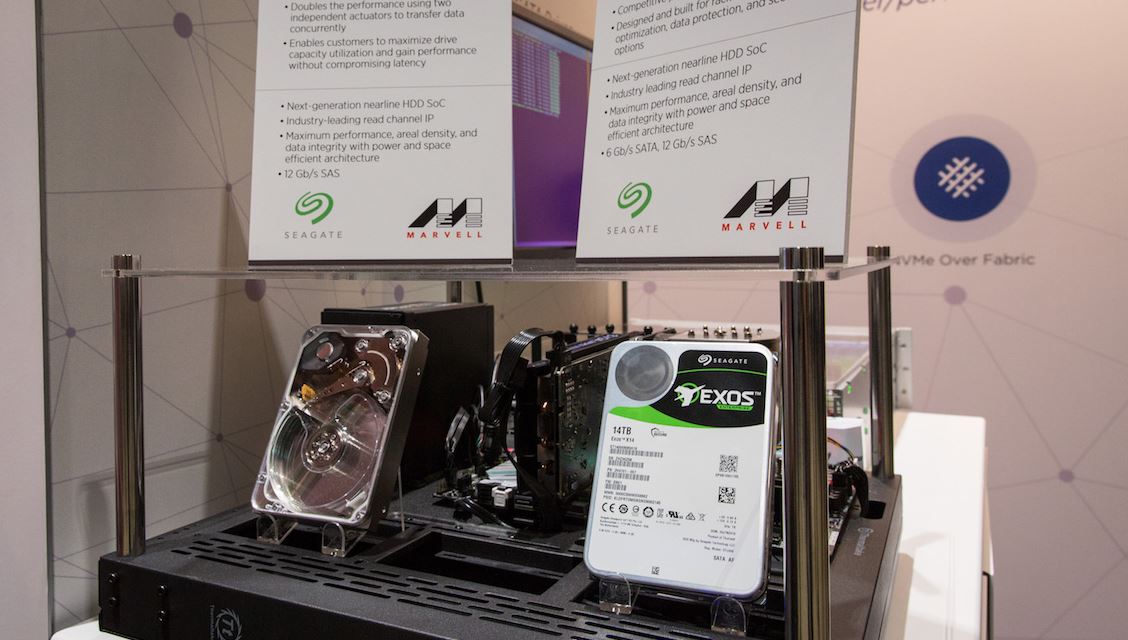Seagate Demos World's Fastest Hard Drive, Doubled Performance, HAMR Progress
Seagate displayed the world's fastest hard drive today at the Open Compute summit and announced that it has surpassed industry reliability standards with its new HAMR HDDs.
The new drives use Seagate's Multi-Actuator technology, which we've covered in depth, to deliver twice the performance of a standard hard drive. Seagate has branded the new actuator technology as "Mach.2" and set a new record for a single hard drive with 480 MB/s of sequential throughput, which is more than twice the standard 235 MB/s of the speediest 7,200-RPM enterprise HDDs. It's also 60% faster than the leading 15K HDDs. The new drives are currently geared for the data center, but we expect the technology will eventually filter down to the consumer market.
The new drives have two sets of actuator arms that each contain their own array of heads. The host system can access each set of heads independently, thus providing twice the throughput.
With twice the performance in hand, Seagate also announced that its Exos drives will also soon have HAMR (Heat Assisted Magnetic Recording) technology that can enable up to 20TB of capacity in a single drive by using tiny lasers on data recording heads. The lasers heat the surface of the drive platter to over 400°C for a split second, which allows it to store up to 2Tb of data per square inch. We have much more in-depth coverage of the technology in our recent "Seagate Plans To HAMR WD's MAMR" article, including pictures of the new laser-infused recording heads, so head there for more detail.
Drive endurance and reliability are the biggest concerns with HAMR technology, but Seagate claims to have surpassed the industry standard reliability metrics for standard hard drives. Seagate announced at the OCP summit that HAMR-infused recording heads are capable of transferring data for 6,000 hours, or more than 3.2 petabytes of data. That is more than 20x the reliability of an industry standard recording head.
Seagate plans to merge both the HAMR and Mach.2 technologies into its Exos hard drives to boost both performance and capacity. Seagate hasn't defined a release date or pricing yet, but with units already in the hands of leading customers, we imagine these drives will come to market sometime later this year.
Get Tom's Hardware's best news and in-depth reviews, straight to your inbox.

Paul Alcorn is the Editor-in-Chief for Tom's Hardware US. He also writes news and reviews on CPUs, storage, and enterprise hardware.
-
salgado18 Nobody will believe me, but I thought about using two heads on HD way back in 2000... :PReply
Anyway, amazing drive! -
King_V Reply20815260 said:Nobody will believe me, but I thought about using two heads on HD way back in 2000... :P
Anyway, amazing drive!
I do, because I remember having this idea around the same time, but also wondering if it would work combined with an internal RAID controller, thus allowing for something like RAID 0 self-contained within a single drive. -
Eximo The only reason they didn't do this all those years ago is that it was more cost effective to increase the density. Now that they are reaching the limits of platter tech, they can actually afford to put more complex disk controllers in there. It should at least double the cost of the circuitry, if not more. Probably also needs a heap load more cache to keep up the writes.Reply -
Enkidu98 What may be cool with this is make the hard drive an internal raid 1 drive. Halve the capacity/performace (so equal to a standard drive) but have the two actuator arms basically writing the same data on its set of platters. This creates a single drive with Raid 1 reliability.Reply -
photonboy ENKIDU98,Reply
Stop and think... RAID1 reliability? Not exactly since many parts of the HDD can fail that still prevent it from starting so anybody concerned with reliability would buy two SEPARATE HDD's. -
USAFRet Reply20815551 said:What may be cool with this is make the hard drive an internal raid 1 drive. Halve the capacity/performace (so equal to a standard drive) but have the two actuator arms basically writing the same data on its set of platters. This creates a single drive with Raid 1 reliability.
yeah, in a single drive.
How is that anything related to 'reliability'?
That is no different than 2 partitions on a single drive, and calling it a RAID 1.
(And yes, I've seen people here want to do that concept...:pfff: ) -
kinggremlin Reply20815260 said:Nobody will believe me, but I thought about using two heads on HD way back in 2000... :P
Anyway, amazing drive!
This isn't a new idea in the slightest. Conner, who was bought out by Seagate after bankruptcy, sold a dual actuator hard drive in the early 90's. Google Conner Chinook. Conner beat your thought by a decade with a commercial product.



